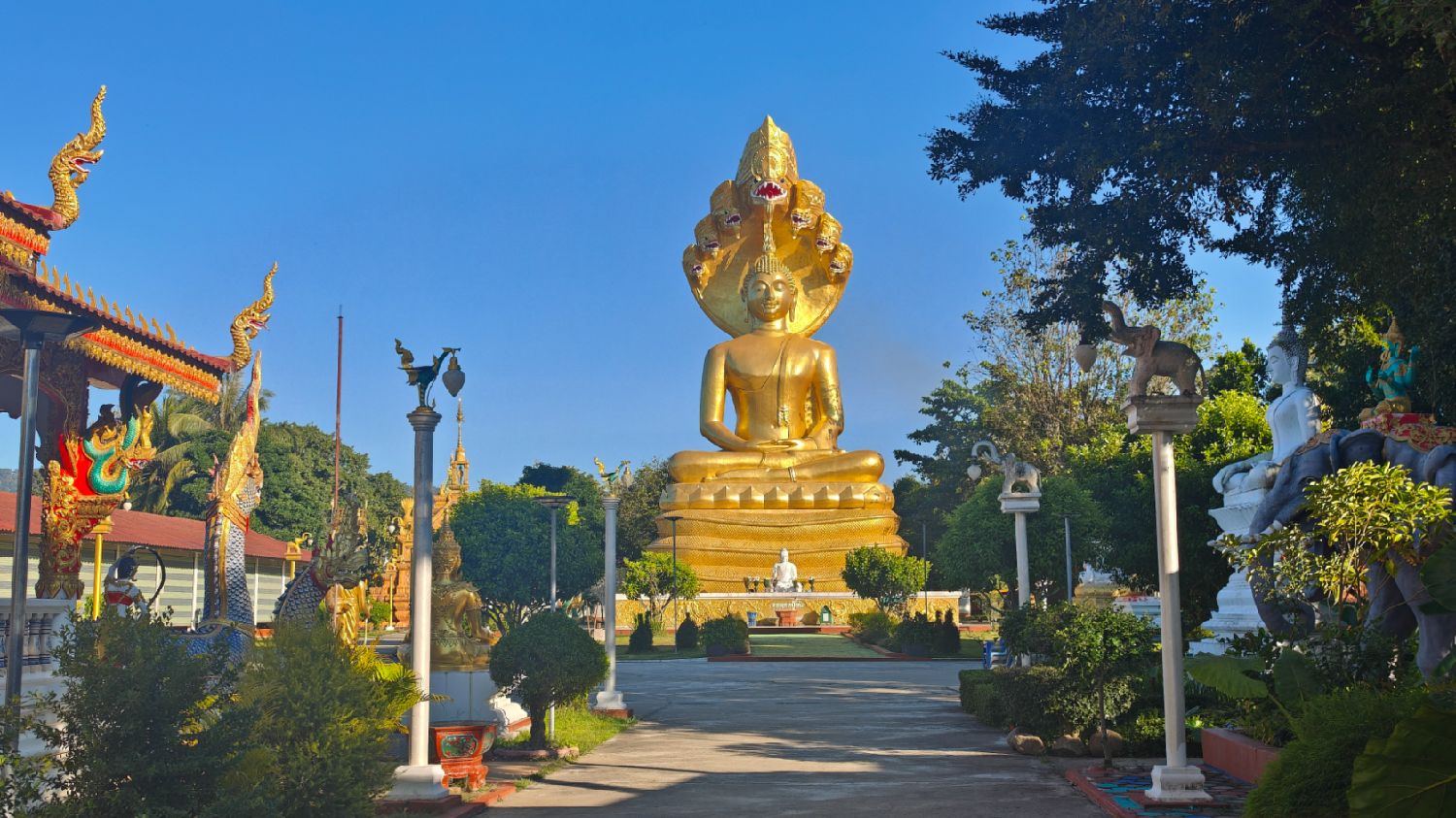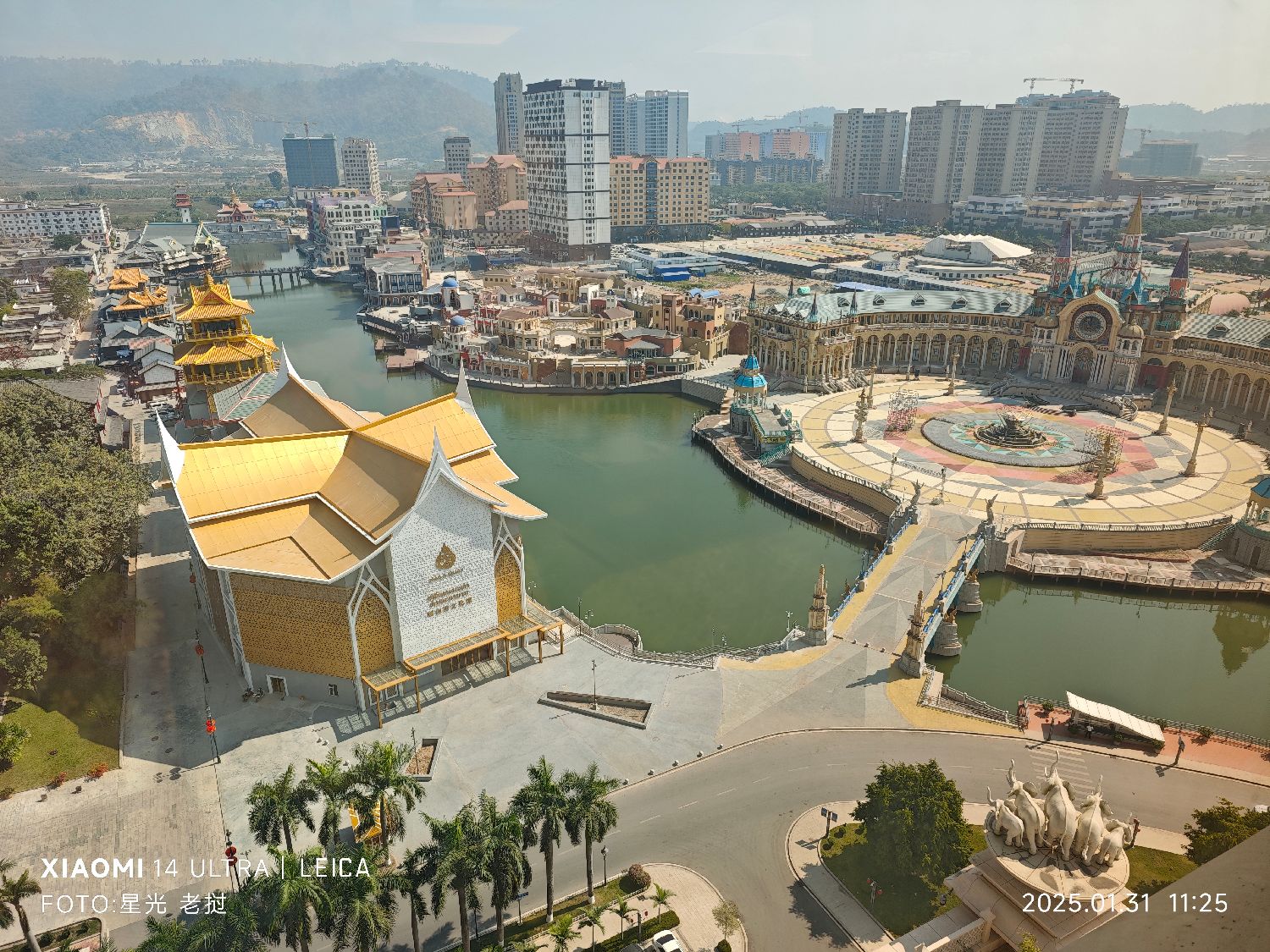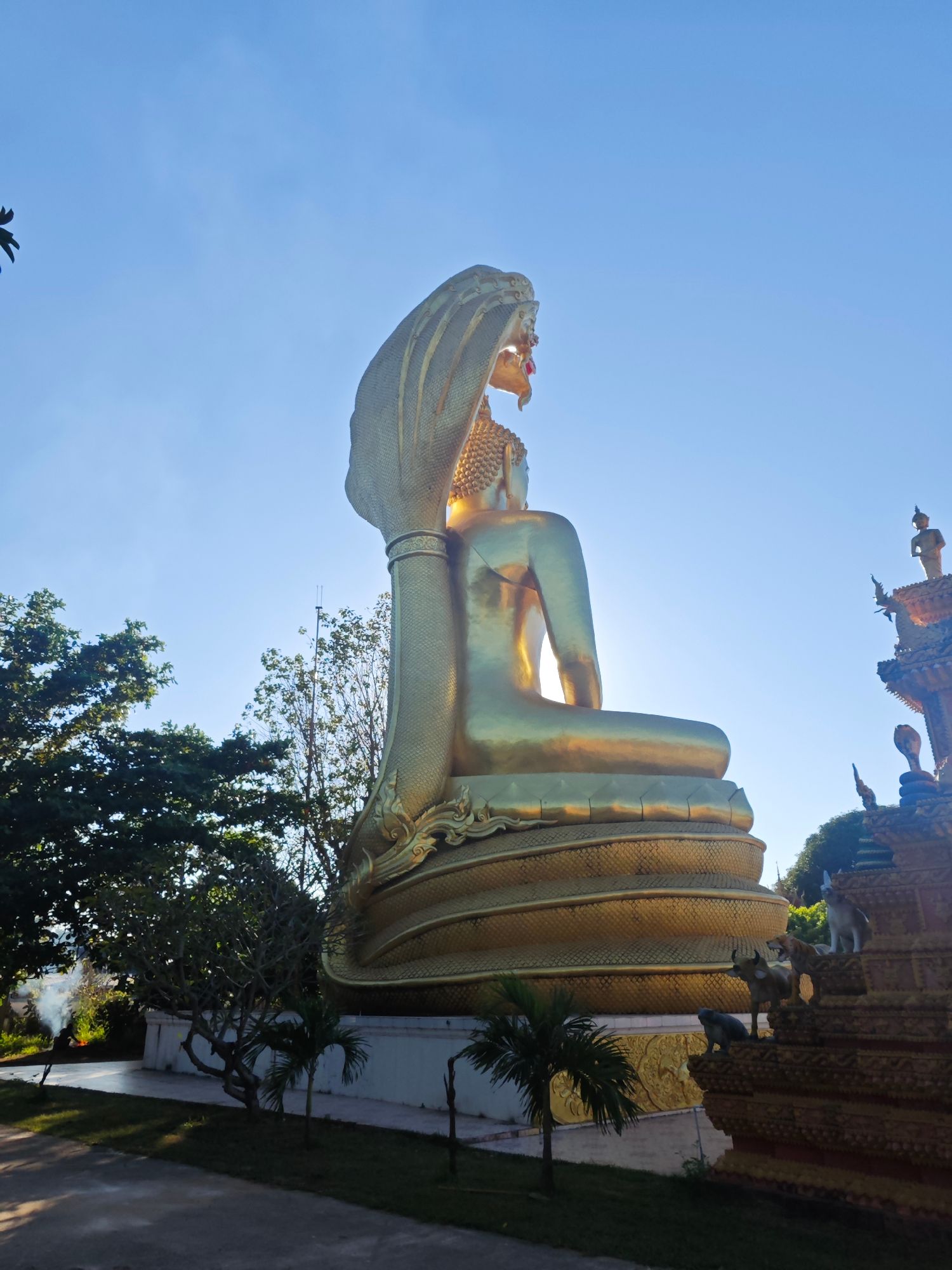
一带一路看老挝:木棉花开处,文明共此时。第二十二届木棉文化节即将开幕!
Auspicious Start to the Year!Belt and Road Initiative in Laos:Where the Kapok Flowers Bloom,Civilizations Unite at This Moment.The22nd Kapok Cultural Festival is About to Begin!
莫道春来早,木棉花开时。
开年大吉!在中国农历春节的喜庆氛围中,老挝博胶省的金三角经济特区迎来了第二十二届木棉文化节。这片曾经荒芜的土地,如今已是高楼林立,瓜果飘香,湄公河两岸灯火通明,中老文明在这里交相辉映,绽放出异彩纷呈的文化之花。
赵伟先生,这位来自中国黑土地的"拓荒牛",以东方巨龙的温柔与坚韧,在这片土地上书写了一个现代版的"愚公移山"故事。他不仅将荒山野岭变成了绿水青山,更将中华文明的智慧(阳明心学)与老挝本土文化完美融合。经济特区的崛起,不仅改变了金三角地区的面貌,更重塑了人们对这片土地的认知。曾经的"毒枭成群,电诈泛滥"的印象,在特区的繁华景象前烟消云散。

即将举办的木棉文化节,恰似一场文明的盛宴。选美大赛、文艺汇演、四国交易会、高尔夫锦标赛......这些活动不仅仅是节日的点缀,更是文明对话的桥梁。中老两国人民在木棉花下欢聚,在美食街中品味,在艺术展前驻足,共同编织着一幅文明交融的锦绣画卷。这种交融不是简单的文化叠加,而是在相互理解与尊重中产生的新的文明形态。
从昆明到万象的高铁飞驰而过,直驱东盟,拉近了中老两国的距离,也加速了文明的交流。经济特区的繁荣景象,让人看到了"一带一路"倡议的生动实践。这里不仅是经济发展的热土,更是文明互鉴的沃土。
木棉花开的盛景,预示着这片土地必将绽放出更加绚丽多彩的文明之花。在这个春意盎然的季节,让我们共同见证中老文明在木棉花下的美丽邂逅。这不仅仅是一场文化的盛宴,更是一个新时代的开启。当木棉花再次绽放时,我们相信,这片土地必将迎来更加美好的明天。
"Belt and Road"Perspective on Laos:Where the Kapok Blooms,Civilizations Converge.
Do not say that spring comes early,it is the time when the kapok flowers bloom.
A prosperous start to the year!Amid the festive atmosphere of the Chinese Lunar New Year,the Golden Triangle Economic Zone in Bokeo Province,Laos,welcomed the22nd Kapok Cultural Festival.This once barren land is now dotted with high-rise buildings,fragrant with fruits,and illuminated by lights along both banks of the Mekong River.Here,Chinese and Lao civilizations intermingle,blossoming into a spectacular cultural flower.
Mr.Zhao Wei,a"pioneer ox"from the black soil of China,has written a modern version of the"Foolish Old Man Moves Mountains"story on this land with the gentleness and tenacity of the Eastern Dragon.He has not only transformed wild mountains into green hills and clear waters but also perfectly integrated the wisdom of Chinese civilization(Yangming's Philosophy of Mind)with local Lao culture.The rise of the economic zone has not only changed the face of the Golden Triangle region but also reshaped people's perceptions of this land.The former image of"drug lords and rampant fraud"has dissipated in the face of the zone's prosperity.
The Kapok Cultural Festival is akin to a feast of civilizations.Beauty pageants,cultural performances,a four-country trade fair,a golf championship...These events are not just embellishments of the festival but bridges for civilizational dialogue.People from China and Laos gather under the kapok trees,savor flavors in the food streets,and pause before art exhibitions,weaving together a splendid tapestry of civilizational integration.This integration is not a mere overlay of cultures but a new form of civilization born from mutual understanding and respect.
The high-speed train from Kunming to Vientiane speeds by,heading straight to ASEAN,bringing China and Laos closer and accelerating the exchange of civilizations.The prosperity of the economic zone showcases the vivid practice of the"Belt and Road"initiative.This land is not only fertile ground for economic development but also a rich soil for mutual learning among civilizations.
The splendid scene of kapok blooming foretells that this land will surely blossom with even more colorful flowers of civilization.In this season full of the breath of spring,let us witness the beautiful encounter of Chinese and Lao civilizations under the kapok trees.This is not just a cultural feast but the dawn of a new era.When the kapok blooms again,we believe that this land will embrace an even brighter tomorrow.

老挝巨型眼镜蛇组成的佛像被称为人面蛇身像,这种雕像的起源可以追溯到远古文化中对蛇繁殖力和生命力的崇拜。人面蛇身的雕像不仅在老挝存在,也在其他文化中有所体现,如中国的女娲和伏羲,印度的那伽,以及希腊神话中的拉米亚等。这些雕像通常象征着超强的繁殖力和生命力,反映了古代社会对这些特质的崇拜
七头蛇神像的背景故事
七头蛇神像的背后有一个引人入胜的故事。传说中,释迦牟尼在修行了多年后,某一天禅定于菩提树之下。在禅定之前,他发下重誓,若不悟证大道,就永不起身。释迦牟尼在树下坐了许久,突然间天昏地暗,狂风骤来,暴雨如注。就在释迦牟尼禅定的不远处有一个很大的湖,湖里栖息着蛇王那伽。那伽有七颗头颅,它的身体伸展开可以遮天蔽日。那伽见释迦牟尼的身躯都淹没了一半,便从湖底游到岸上,用尾巴卷起释迦牟尼,让他安坐在自己身上,为他挡住了狂风骤雨,直至天空放晴。这段蛇王护佛成道的传说在泰国可以说是家喻户晓。
七头蛇神像的文化意义
七头蛇神像不仅是一件艺术品,更是一段历史的见证。它象征着佛教文化中的护法精神和对自然力量的崇拜。在东南亚国家,人们崇拜眼镜蛇王,这种雕塑在寺庙和祭祀场所随处可见。七头蛇神像的存在不仅展示了佛教文化的深厚底蕴,也反映了当地人对自然力量的敬畏之心。
The giant cobra-formed Buddha statue in Laos,known as the Nāga Buddha,traces its origins back to ancient cultures that revered the snake for its fertility and vitality.This anthropomorphic serpent imagery is not unique to Laos;it is also found in other cultures,such as the Chinese deities Nüwa and Fuxi,the Indian Nāga,and the Greek mythological figure Lamia.These statues typically symbolize extraordinary reproductive power and vitality,reflecting the ancient societies'worship of these attributes.
The backstory of the seven-headed Nāga statue is particularly fascinating.Legend has it that after many years of ascetic practice,the Buddha Shakyamuni was meditating under the Bodhi tree when he made a solemn vow not to rise until he had attained enlightenment.As he sat in deep meditation,the sky darkened,and a fierce storm arose.Nearby,there was a large lake inhabited by the Nāga king,who had seven heads and a body so vast it could block out the sky and sun.Seeing the Buddha half-submerged in water,the Nāga king emerged from the lake,coiled his tail around the Buddha,and lifted him onto his body,shielding him from the storm until the skies cleared.This tale of the Nāga king protecting the Buddha on his path to enlightenment is well-known in Thailand.
The cultural significance of the seven-headed Nāga statue extends beyond its artistic value;it is a testament to history.It embodies the protective spirit within Buddhist culture and the reverence for natural forces.In Southeast Asian countries,where the Nāga king is worshipped,such sculptures are a common sight in temples and places of worship.The presence of the seven-headed Nāga statue not only showcases the profound depth of Buddhist culture but also mirrors the local people's awe for the power of nature.